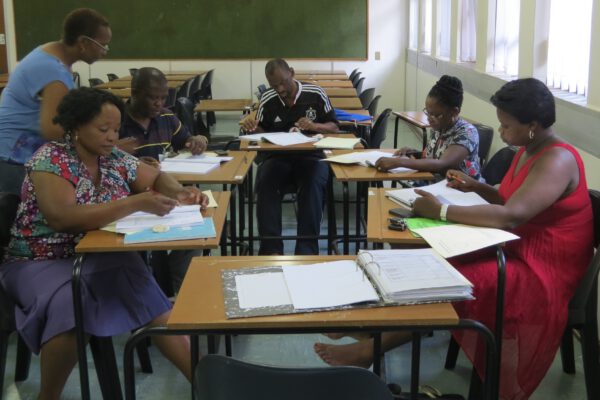
As ACE celebrates its centennial in 2018, this is one in a series of posts that look at how ACE initiatives have left an impression on the higher education landscape and impacted peoples’ lives.
ACE was founded in 1918 with the primary goal of coordinating the resources of higher education to meet the nation’s immediate needs during World War I, including intensive training for officers and other key personnel, and ensuring that faculty research programs were deemed essential to exploring wartime inventions and innovations. ACE also helped expand the nascent Army Reserve Officers’ Training Corps authorized by the National Defense Act in 1916.
After the war ended, ACE redirected itself to more expansive peacetime roles. But in the 100 years since, the Council has played a key role in responding to the educational needs of military members and veterans, perhaps most significantly by working closely with the federal government on two GI Bills—the original implemented after World War II, and an updated version in the aftermath of 9/11.
In 1942, President Franklin D. Roosevelt appointed a commission—which included ACE President George F. Zook—to help America’s World War II veterans return to civilian life. ACE helped draft and lobbied for the passage of the Servicemen’s Readjustment Act, commonly called the GI Bill. President Roosevelt signed the bill into law on June 22, 1944, saying, “[This bill] gives emphatic notice to the men and women in our armed forces that the American people do not intend to let them down.”
The bill awarded military veterans broad and generous economic rights in three key areas: educational support, unemployment benefits, and loan guarantees. The education benefits included annual tuition payments of up to $500 for one to four years, depending on age and length of service, plus a monthly stipend for living expenses.
Notably, the benefits were awarded to individuals rather than institutions, so veterans could apply them to the college, university, or vocational, technical, or apprentice training of their choice. Fifty-one percent of all veterans, or roughly 8 million people, accessed the GI Bill’s educational provisions, with about one-fourth pursuing college degrees and the remainder pursuing vocational training.

With few exceptions, the GI Bill significantly improved the nation’s social fabric and economic prospects. Higher education was now accessible to the middle class, and the GI Bill helped to produce professionals in areas from engineering to science to teaching to medicine.
As V. R. Cardozier said in Colleges and Universities in World War II, “The increased income of college graduates educated under the GI Bill resulted in increased tax payments that exceeded the expenditures of their education. Increased income resulted in greater purchasing power and a larger market for goods and services produced by the American economy, thereby providing more and better jobs. Perhaps even more important overall was the improvement in quality of life.”
The Post-9/11 GI Bill
After the terrorist attacks on Sept. 11, 2001, new needs called for an updated version of the GI Bill. In an effort led by Dartmouth College’s (NH) President James Wright, ACE assisted Senator Jim Webb (D-VA) and the Department of Veterans Affairs (VA) in crafting the most comprehensive educational benefit package yet to address the specific needs of post-9/11 veterans.
In addition to supporting a range of educational options—from college classes to on-the-job training programs—ACE and the VA added two new components to the bill.
The bill, signed into law in June 2008, provided substantial support for veterans to attend any public college or university at the in-state tuition rate. To help veterans interested in attending a private college or university, it established the innovative Yellow Ribbon Program, which allows these institutions to enter into an agreement with the VA to fund tuition and expenses that exceed the veteran’s GI Bill benefits. ACE also assisted the VA in creating a transfer option that enabled service members with 10 or more cumulative years of service to transfer some or all of their unused GI Bill education benefits to their spouse or dependent children.
After the bill was implemented, ACE worked with Sen. Daniel Akaka (D-HI) in drafting the Post-9/11 Veterans Educational Assistance Improvements Act of 2010, which amended and improved the 2008 legislation, including benefits for some National Guard service members.

Pentagon Personnel Chief Clifford Stanley said in 2010 that the new education benefits proved to be “a huge factor” in helping the armed forces achieve their recruiting and retention goals.
Keith Wilson, the VA’s director of education services, added that the best measure of the program’s success had been the number of students taking advantage of its benefits. In a 2010 article by the Armed Forces Press Service, Wilson said, “We have significantly more students in school, and they are pursuing their dreams. . . . At its core—that is what is successful.”
If you have any questions or comments about this blog post, please contact us.


